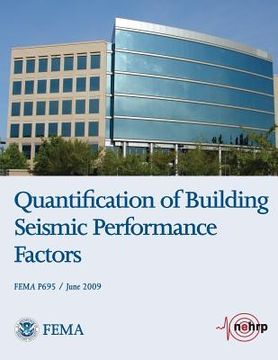Quantification of Building Seismic Performance Factors (FEMA P695 / June 2009) (en Inglés)
Reseña del libro "Quantification of Building Seismic Performance Factors (FEMA P695 / June 2009) (en Inglés)"
This report describes a recommended methodology for reliably quantifying building system performance and response parameters for use in seismic design. The recommended methodology provides a rational basis for establishing global seismic performance factors (SPFs), including the response modification coefficient, the system over strength factor, and deflection amplification factor, of new seismic-force-resisting systems proposed for inclusion in model building codes. The purpose of this Methodology is to provide a rational basis for determining building seismic performance factors that, when properly implemented in the seismic design process, will result in equivalent safety against collapse in an earthquake, comparable to the inherent safety against collapse intended by current seismic codes, for buildings with different seismic-force-resisting systems. As developed, the following key principles outline the scope and basis of the Methodology: It is applicable to new building structural systems; It is compatible with the NEHRP Recommended Provisions for Seismic Regulations for New Buildings and Other Structures (FEMA, 2004a) and ASCE/SEI 7, Minimum Design Loads for Buildings and Other Structures, (ASCE, 2006a); It is consistent with a basic life safety performance objective inherent in current seismic codes and standards; Earthquake hazard is based on Maximum Considered Earthquake ground Motions; Concepts are consistent with seismic performance factor definitions in current seismic codes and standards; Safety is expressed in terms of a collapse margin ratio; Performance is quantified through nonlinear collapse simulation on a set of archetype models; Uncertainty is explicitly considered in the collapse performance evaluation. The Methodology is intended to apply broadly to all buildings, recognizing that this objective may not be fully achieved for certain seismic environments and building configurations. Likewise, the Methodology has incorporated certain simplifying assumptions deemed appropriate for reliable evaluation of seismic performance. Key assumptions and potential limitations of the Methodology are presented and summarized. In the development of the Methodology, selected seismic-force-resisting systems were evaluated to illustrate the application of the Methodology and verify its methods. Results of these studies provide insight into the collapse performance of buildings and appropriate values of seismic performance factors. Observations and conclusions in terms of generic findings applicable to all systems, and specific findings for certain types of seismic-force resisting systems are presented. These findings should be considered generally representative, but not necessarily indicative of all possible trends, given limitations in the number and types of systems evaluated. The Methodology is recommended for use with model building codes and resource documents to set minimum acceptable design criteria for standard code-approved seismic-force-resisting systems, and to provide guidance in the selection of appropriate design criteria for other systems when linear design methods are applied. It also provides a basis for evaluation of current code-approved systems for their ability to achieve intended seismic performance objectives. It is possible that results of future work based on this Methodology could be used to modify or eliminate those systems or requirements that cannot reliably meet these objectives.

